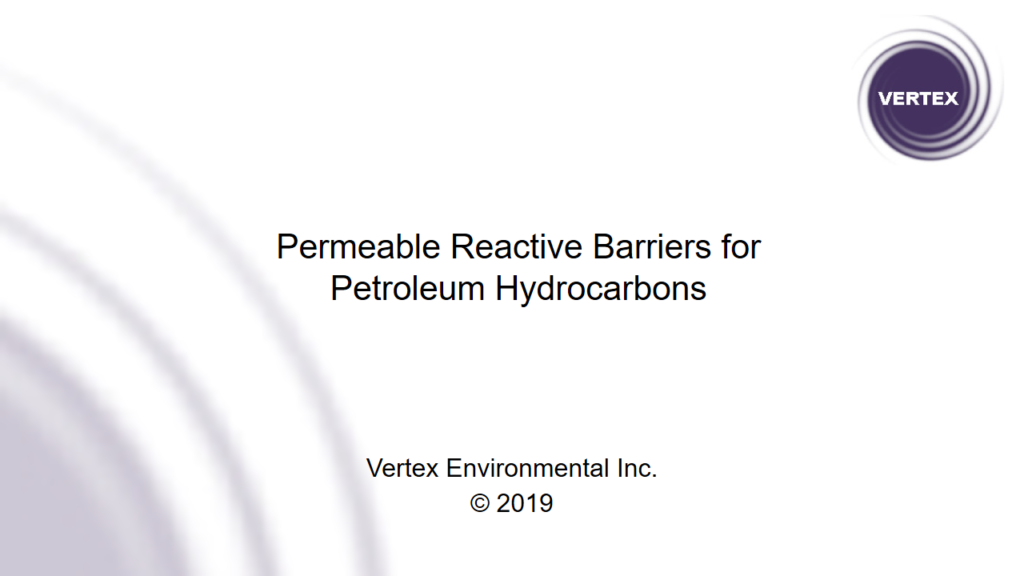Overview
Managing contamination along property boundaries or adjacent to sensitive receptors has long been an area of focus for the environmental industry. Property boundary Risk Management Measures (RMMs) are often required as part of the overall remedial strategy. In the 1990s the first permeable reactive barrier (PRB) was pioneered, used zero-valent iron (ZVI), and were very effective and widely applied for the treatment of chlorinated solvents. Unfortunately that technology is ineffective for petroleum hydrocarbons (PHCs). For many years attempts have been made to create a PRB for the sustained treatment of PHCs. This presentation showcases two new PRB technologies to passively and sustainably treat migrating PHCs.
One method uses Activated Carbon (AC)-based technology: referred to as “Trap and Treat”. Previously the use of AC in the subsurface was limited due to its finite adsorptive capacity. However, new technological developments allow for both the adsorption and subsequent treatment of PHCs using an efficient biodegradation approach. PRBs can now be installed for sustained PHC plume capture and treatment over a long period of time – much longer than would otherwise be possible with the application of AC alone.
The second PHC PRB technology uses slow-release oxidants. The use of chemical oxidation in PRBs has been historically limited, especially in fast flowing groundwater regimes, due to the typically high solubility of oxidants. Lowering the solubility of oxidants has allowed their use over the longer term in PRBs.
Within this presentation each technology and associated case studies are presented and discussed. The presentation concludes with general recommendations on installation techniques for PRBs for sustained PHC treatment.
Download PDF


